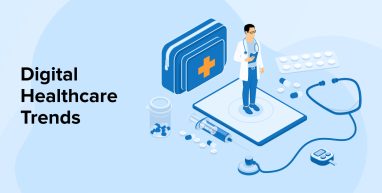
With the emergence of technologies like Artificial Intelligence, Machine Learning, and blockchain, embracing digital technology has become indispensable for every industry. The COVID-19 pandemic served as a platform of opportunities for technocrats to start an era of rapid digital evolution in the healthcare industry. It triggered the digital transformation in healthcare systems at a pace never like before. As a result, the digital health market has started progressing at full throttle.
The aftermath of COVID-19 saw the emergence and adoption of digital health trends. Healthcare software development companies must explore all the areas of their effective utilization and leverage their full potential. In this blog post, we’ll discuss the prominent digital healthcare trends that the healthcare industry is witnessing and contributing to its progress in improving patient outcomes and experiences.
1. Rising Trends in Digital Health
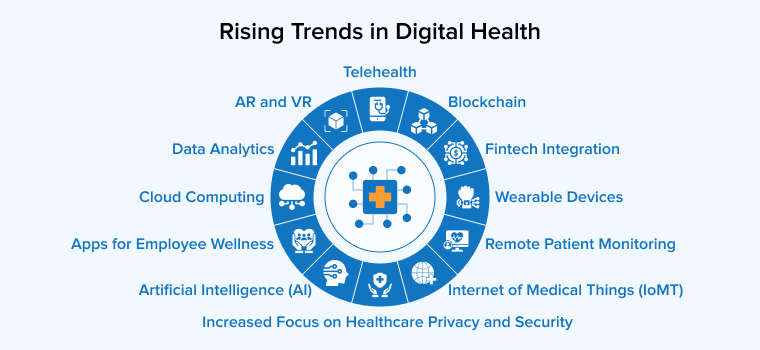
Just imagine how you would harness the potential of digital health solutions without knowing about what’s going on in this digital health industry. What has made the health sector invest extensively in this digital health landscape? The answer is innovative health trends that are predicted to change the entire system of patient care and healthcare services. It is estimated that the global digital healthcare market will touch $549.7 billion by 2028, projecting a CAGR of 25% from 2023 to 2028.
Let’s comprehend the top digital health trends modernizing healthcare systems.
1.1 Telehealth
You can now connect with your healthcare providers and care coordinators through smartphones, laptops, or tablets. There is no longer a need to run to hospitals for things like routine checkups, follow-ups, prescription refills, psychiatric counseling and therapies, and child developmental screenings. Just a video call or text messaging can serve your purpose. This approach increases the availability and cost-effectiveness of healthcare services. People living in remote and rural areas with restricted mobility options can virtually connect with their doctors and save time and money.
Healthcare professionals are also benefiting from the use of communication technology. Reduced in-person visits allow them to focus on critical and emergency cases. Telehealth services facilitate collaboration and communication among different healthcare teams for critical cases or when specialists are unavailable in small towns and cities. There is a rise in the development of various healthcare applications contributing to the expansion of telehealth services.
1.2 Artificial Intelligence (AI)
Generative AI’s integration into healthcare technology can solve many challenges and enhance the quality of healthcare services. The following are some of the wonders AI tools can and are creating in this sector:
- AI can analyze vast amounts of patient data and provide data-driven insights on healthcare diagnoses. It can even help in making treatment plans.
- Virtual assistants and robots can reduce healthcare personnel requirements and enhance patient care delivery.
- Generative AI can automate routine administrative tasks, like note-taking and maintaining patient records, giving more time to healthcare professionals to focus on patient treatment.
- AI-powered chatbots can answer many patient queries regarding medications, occurring symptoms, doctor availability schedules, booking appointments, etc.
- Robots can help in surgeries by providing 3D visualization and operating through small incisions in the skin, which reduces blood loss and infection risk. They can also operate in hard-to-reach places and offer many more benefits.
1.3 Internet of Medical Things (IoMT)
We are all familiar with IoT, i.e., Internet of Things. However, there’s also something called IoMT, which refers to the interconnected system of wireless medical devices such as wearable technology, software, and monitoring devices to collect and share data in real-time with medical providers. With IoMT, doctors can get a variety of health data from diverse sources. They can accurately monitor the health status of chronic patients and immediately respond to emergencies. It increases the data collection, transmission, and analysis speed using cloud computing, producing effective results.
This digital technology not only improves the quality of healthcare delivery but is also cost-effective. It lessens hospital readmissions and in-person visits, optimizes resource allocation, detects health issues on time, prevents major complications in the future that increase treatment costs, and so on. The principle of self-care is being cultivated among people, thereby increasing health awareness in society.
1.4 Augmented Reality (AR) and Virtual Reality (VR)
Virtual Reality (VR) simulates real-world scenarios in a virtual 3D immersive environment with the help of VR headsets, giving a real-world perception. It is an advantageous digital health solution as:
- Doctors can perform different surgeries using haptic controllers, which provide hands-on experience. VR even explains the process in detail to guide the users.
- This technology helps divert patients’ attention during surgeries, thereby reducing the need to give harmful painkillers.
- AI virtual or real instructors can join the VR session remotely to supervise physical therapies from general orthopedics to injury recovery.
- It can provide medical training to medical graduates, allowing them to perform a medical procedure by simulating dangerous and expensive scenarios to create real-life scenarios.
Augmented Reality (AR) overlays digital augmentation onto a real-life environment, enhancing real-life objects. It is beneficial in the digital health landscape in different ways:
- AR helps in diagnosis by increasing the understandability of medical images, like MRIs and CT scans.
- It can guide people during medical emergencies, for example, it will explain the exact steps of giving CPR to somebody during cardiac arrest.
- AR can overlay 3D models of the human body onto the patient’s body, allowing patients to point to the precise location of their pain.
1.5 Remote Patient Monitoring
RPM gained huge prominence during the COVID-19 pandemic. Now, doctors can constantly monitor patients’ health conditions, even when they’re not present in the hospital. They do this by leveraging healthcare applications, wearable devices, and digital health platforms, i.e., telehealth. RPM is beneficial, especially for patients with chronic health conditions such as cardiovascular issues, diabetes, high blood pressure, cholesterol, etc. The devices employed provide healthcare practitioners with real-time data and keep them in the loop.
Remote monitoring lets the doctor provide remote care to multiple patients at a time and prioritize the cases requiring immediate attention. The data collected provides a holistic view of the patients, enabling healthcare providers to develop personalized solutions that increase personalized care.
1.6 Apps for Employee Wellness
The pandemic forced people to sit in their homes, and work-from-home culture became a trend that is still being followed in the IT sector. Continuous homestay for a long time and working remotely gave rise to several mental health issues affecting employees’ productivity and work outcomes. This situation grabbed the attention of employers, and they have started focusing on improving the mental well-being of their employees through different mediums. As a result, there are now multiple kinds of employee wellness applications available in the market.
These applications offer team-based challenges to encourage team engagement and coordination, resulting in higher performance. Companies can lessen their healthcare expenditure on employees by promoting good health in the workplace. Employees can apply stress reduction techniques and mindfulness exercises offered by such apps to control work-related stress and work efficiently. Mental health initiatives at workplaces create a positive workplace culture, increasing the satisfaction and efficiency of employees. The data generated from wellness apps can be used by HRs to continuously improve their strategies to boost employee productivity.
1.7 Cloud Computing
Cloud computing in healthcare involves storing, managing, and transferring healthcare data through remote server access with the help of the Internet. You might have heard about EHR (Electronic Health Records) and EMR (Electronic Medical Records). Both are cloud-based technologies.
Let’s look at how cloud computing maximizes the contributions of digital healthcare:
- IoMT Support: IoMT technology uses cloud computing to monitor the real-time health status of patients and provide accurate data to doctors.
- Data Interoperability: Cloud computing facilitates data integrations throughout the entire healthcare system, without worrying about the different data storage facilities. Healthcare professionals can easily access data from the required sources and distribute it among the stakeholders.
- Simplifies Administrative Processes: Cloud-based digital healthcare solutions automate processes like billing, scheduling, and patient management.
- Improves Collaboration: The patients and doctors can easily access the medical records whenever required. The doctors can share those records with other doctors and collaborate on treatment plans.
1.8 Data Analytics
Data analytics in healthcare is the process of analyzing huge amounts of patient data to determine relevant patterns, trends, and draw useful insights from them to make informed decisions and enhance medical care. There are four significant types of data analytics in healthcare:
- Descriptive analytics: It utilizes historical patient records to gather information about the benchmarks and trends.
- Prescriptive analytics: It uses machine learning algorithms to determine various patterns.
- Predictive analytics: It predicts future happenings using forecasting and modeling from historical and current patient data.
- Discovery analytics: It uses historical data, forecasts, and complex software to develop healthcare solutions.
Some of the major uses of data analytics in healthcare:
- Data analytics is remodeling the discovery and development processes associated with medical drugs using advanced machine-learning models.
- Analyzing radiology images manually is time-consuming and requires great expertise. However, machine learning models can be trained for these tasks and give the best results.
- Data analytics can help hospitals minimize waste and effectively manage resources like medicine, blood supplies, and donor organs.
1.9 Blockchain
Blockchain is a distributed digital ledger that isn’t restricted to one system for managing transactions. It follows a decentralized approach, where computers located distantly are recording transactions. It is a relatively modern and emerging technology getting accepted leisurely.
With the growing use of electronic health records, a big security challenge has come up for healthcare organizations in ensuring data privacy and integrity. This digital healthcare technology can solve these issues tremendously through proper implementation. You have to link the electronic health record (EHR) software with a blockchain-based medical record system. This will ensure the authenticity of patients’ data.
According to the report, the global blockchain technology in healthcare market size was estimated at USD 7.04 billion in 2023 and is expected to grow at a CAGR of 63.3% from 2024 to 2030.
False results and data disintegration in clinical trials can be overcome with blockchain technology. It effectively tracks the accuracy and timeliness of data collected and stored from the IoMT devices.
1.10 Fintech Integration
Fintech integration means the healthcare industry is adopting digital technology to manage its financial services, like billing. It is revolutionizing record management, telemedicine, insurance, etc. Thus refining the efficiency, accessibility, and affordability of healthcare. The goal is to maximize reliability while exchanging funds and information between medical service providers and patients.
We’ll try to understand some use cases of fintech integration in healthcare:
- Easy payment processing: The billing process has become easy. Now, patients can make online payments, receive bank statements, and track their bills using the internet and mobile banking, which improves the patient experience.
- Efficient supply chain management: A hospital must ensure that they do not experience shortages of medicines and medical devices. Fintech solutions can help in inventory tracking and management, automation of reordering processes, and prediction of demand before the stock becomes empty. This approach can help decrease the expense of stockkeeping and reduce wastage.
- Impede frauds: The fraud detection algorithms embedded in fintech applications identify theft or false insurance claims and stop any deceitful activities beforehand. It protects sensitive patient data using encryption and cloud storage techniques.
1.11 Increased Focus on Healthcare Privacy and Security
With technological advancements, the number of cyberattacks has increased. The attackers discover different ways of breaching the security gateways and injecting malicious code to commit fraudulent activities. Hence, healthcare organizations have developed different cybersecurity laws and guidelines, and strictly observe that the software industry in the healthcare domain adheres to them.
The two major data protection standards followed worldwide are the HIPAA and GDPR laws. These are legal obligations, and non-compliance can result in severe penalties. Healthcare institutes must conduct cybersecurity assessments annually and keep an eye on the increasing adoption of telemedicine, wearables, electronic health records, etc. Healthcare companies must remain vigilant regarding the occurrence of security attacks and adopt the best mitigation standards.
1.12 Wearable Devices
The smartwatch you wear nowadays can detect your daily footstep count, pulse rate, physical activities, and so on. Isn’t it amazing? Seeing these metrics makes you aware of your health. You actively participate in your healthcare activities and visit healthcare professionals in case of timely interventions. The built-in sensors give alerts and reminders before the situation gets worse. Doctors can also monitor their chronic patients remotely. These digital tools even ease their task and increase the efficiency of care coordination with other healthcare providers.
Medical device companies utilize wearables to collect data and ensure the quality of their devices. These devices inculcate healthy habits, suggest health routines, and help the aging population by reducing their need to visit hospitals, thus reducing the burden on health systems. Wearables are not a new digital health trend but a persistent one.
2. Final Words
The twelve prominent digital health trends will continue to evolve in the future, opening new avenues for different healthcare systems. We’ll witness the growing application of precision medicine and personalized care in the upcoming years. Now, it’s the responsibility of healthcare organizations and professionals to cope with digital health trends and discover the possibilities of their benefits in personalized healthcare and patient progress. Healthcare companies must adopt a business model flexible to the emerging digital health trends to upgrade the development process for building digital healthcare solutions.
FAQS
What is the future of digital health?
In the future, we’ll notice that artificial intelligence will analyze various symptoms and conduct at-home lab tests. The use of wearable devices will reach its peak for monitoring chronic conditions and aging populations. Telehealth would be used for remote diagnostics. All of this will empower patients for their self-care and boost their bodily autonomy.
What is the impact of digital health technology?
Digital healthcare technology is promoting the idea of personalized medicine, encouraging the participation of different stakeholders in healthcare, enhancing Medicaid services, raising awareness regarding mental health issues and therapies, and many more.


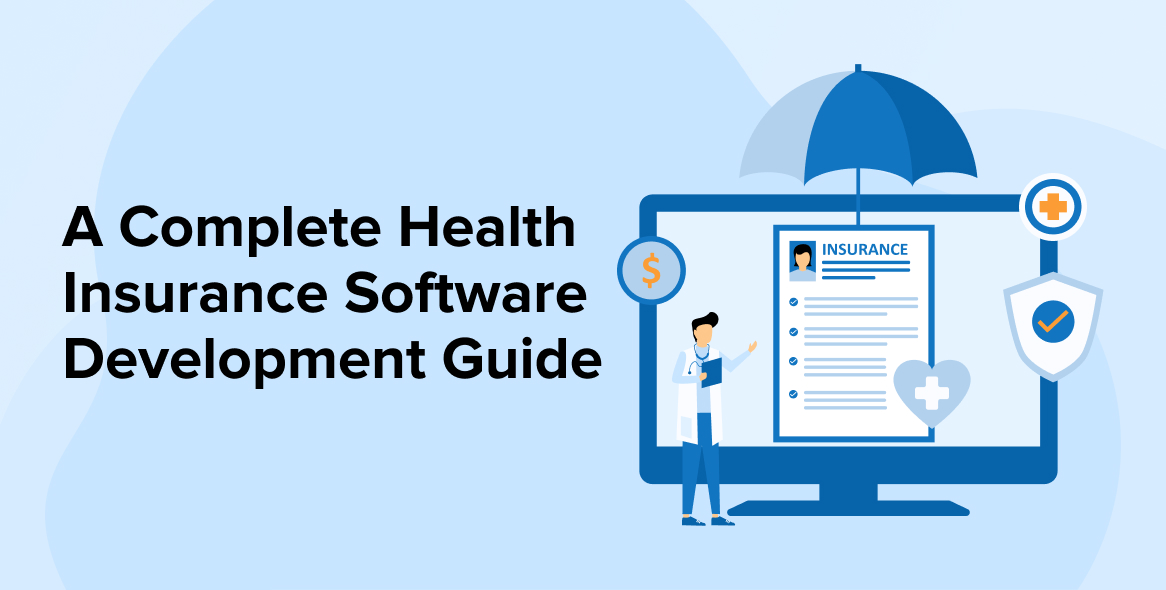
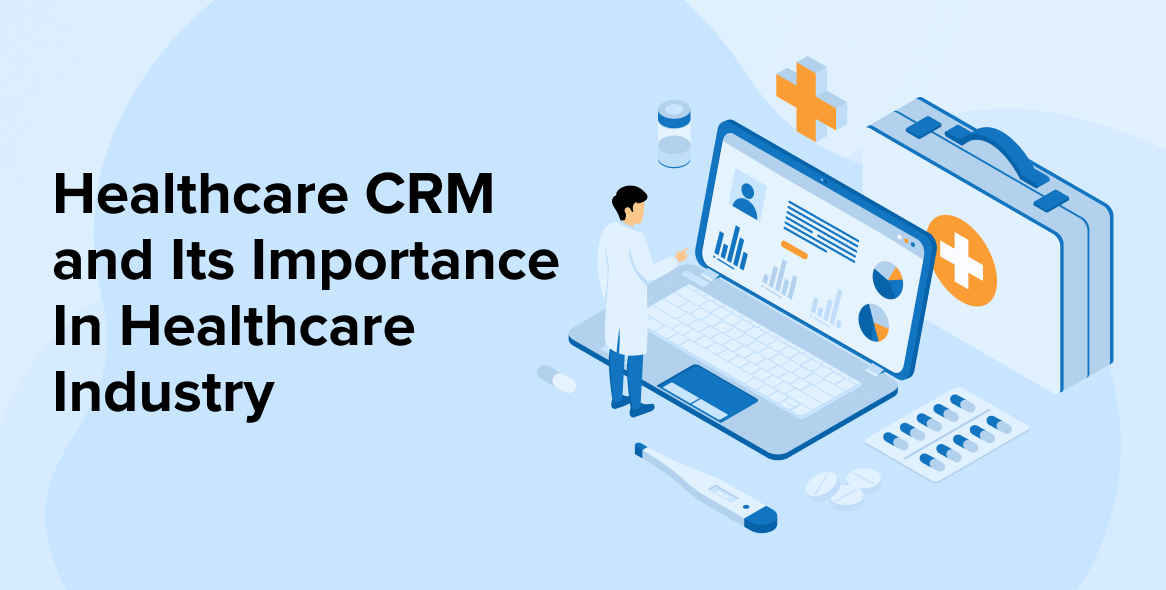
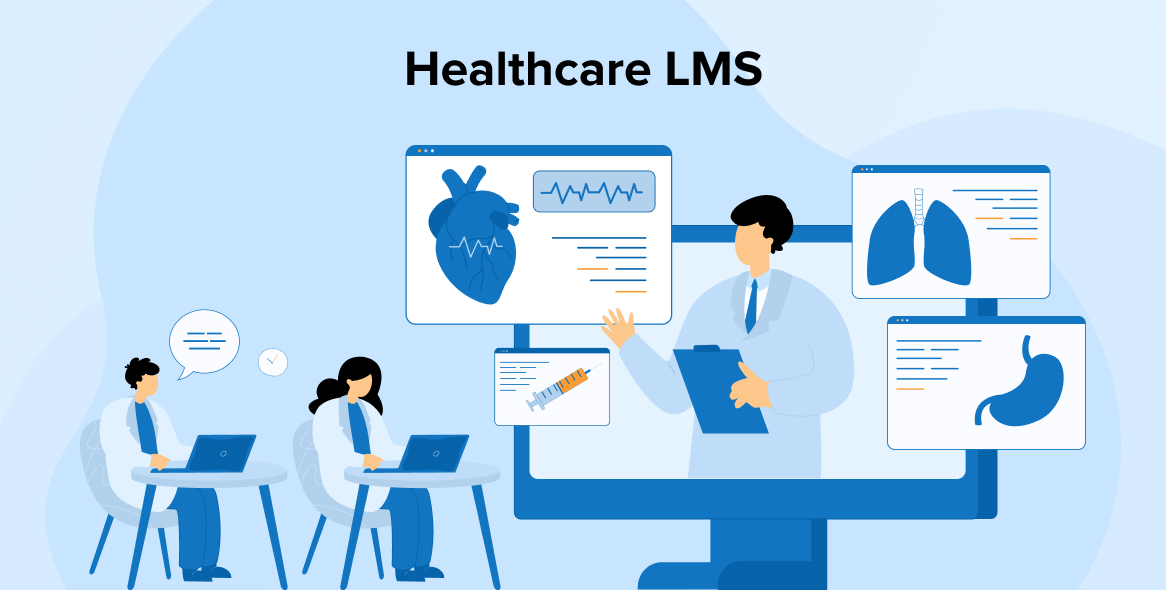

I found this blog to be highly informative and relevant, as it delves into the latest trends in digital technology in healthcare. The content is well-organized and provides a valuable overview of the key advancements shaping the future of healthcare.
I was impressed with the depth of knowledge and expertise showcased in this blog. The trends of digital technology in healthcare are presented in a clear and concise manner, making it an informative and insightful read for healthcare professionals and technology enthusiasts alike.
Thank you for sharing this insightful article about Trends In Digital Health. This Improvement in technology has caused a transformative shift in healthcare, and these trends are completely changing how we approach patient care.
This blog covers some of the most effective trends in digital health that are bringing change to the sector right now, like Consumer AI, cloud-based Data, Telehealth, Big Health Data, Remote Patient Monitoring, and many more. Thanks for sharing this valuable article.
This blog post gives an excellent overview of the latest trends in digital technology in healthcare. In this blog, the author discusses the potential benefits of these technologies, such as improved patient care, reduced costs, and increased efficiency. It also draws attention to some of the challenges that need to be addressed in order to fully realise the potential of these technologies.
This is a very informative and well-written blog post! It provides a good overview of the key trends in digital technology that are shaping the future of the healthcare industry. As a healthcare professional, this blog helps me to provide better care to my patients and save time and energy.
This article on Trends in Digital Health is a must-read for anyone looking to stay ahead in the rapidly evolving landscape of healthcare. The insights provided in this article delve into the cutting-edge developments shaping the future of healthcare.
Appreciate you sharing this article! I particularly like the section on remote patient monitoring. It's fascinating to learn how digital health technologies and medical devices are poised to enhance patient monitoring, provide support, and analyze behaviors. The addition of digital indications can greatly expand usage cases for remote patient monitoring.